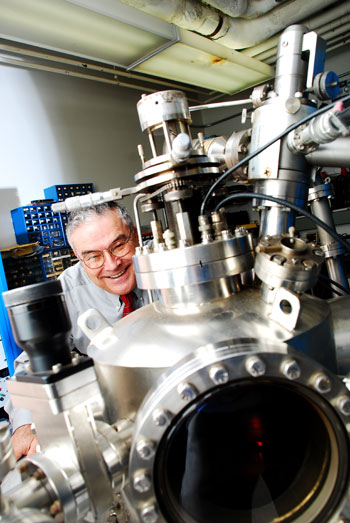Researchers have used rapid pulses of light to transmit information at speeds of over 500 megabytes per second at the Heinrich Hertz Institute in Berlin. Dubbed Li-Fi (not to be confused with Light Fidelity) is this a viable competitor to conventional wifi ?
“At the heart of this technology is a new generation of high-brightness light-emitting diodes” says Harold Hass from the University of Edinburgh ”Very simply, if the LED is on, you transmit a digital 1, if it’s off you transmit a 0. They can be switched on and off very quickly, which gives nice opportunities for transmitting data.”
It is possible to encode data in the light by varying the rate at which the LEDs flicker on an off to give different strings of 1s and 0s. The modulation is so fast that the human eye doesn’t notice.
“There are over 14 billion light bulbs world wide, they just need to be replaced with LED ones that transmit data”.
This may solve issues such as the shortage of radio-frequency bandwidth and also allow internet where traditional radio based wireless isn’t allowed such as aircraft or hospitals. One of the shortcomings however is that it only work in direct line of sight.
[http://the-gadgeteer.com/2011/08/29/li-fi-internet-at-the-speed-of-light/]
Will Li-Fi be the new Wi-Fi?
FLICKERING lights are annoying but they may have an upside. Visible light communication (VLC) uses rapid pulses of light to transmit information wirelessly. Now it may be ready to compete with conventional Wi-Fi.
“At the heart of this technology is a new generation of high-brightness light-emitting diodes,” says Harald Haas from the University of Edinburgh, UK. “Very simply, if the LED is on, you transmit a digital 1, if it’s off you transmit a 0,” Haas says. “They can be switched on and off very quickly, which gives nice opportunities for transmitting data.”
It is possible to encode data in the light by varying the rate at which the LEDs flicker on and off to give different strings of 1s and 0s. The LED intensity is modulated so rapidly that human eyes cannot notice, so the output appears constant.
More sophisticated techniques could dramatically increase VLC data rates. Teams at the University of Oxford and the University of Edinburgh are focusing on parallel data transmission using arrays of LEDs, where each LED transmits a different data stream. Other groups are using mixtures of red, green and blue LEDs to alter the light’s frequency, with each frequency encoding a different data channel.
Li-Fi, as it has been dubbed, has already achieved blisteringly high speeds in the lab. Researchers at the Heinrich Hertz Institute in Berlin, Germany, have reached data rates of over 500 megabytes per second using a standard white-light LED. Haas has set up a spin-off firm to sell a consumer VLC transmitter that is due for launch next year. It is capable of transmitting data at 100 MB/s – faster than most UK broadband connections.
Once established, VLC could solve some major communication problems. In 2009, the US Federal Communications Commission warned of a looming spectrum crisis: because our mobile devices are so data-hungry we will soon run out of radio-frequency bandwidth. Li-Fi could free up bandwidth, especially as much of the infrastructure is already in place.
“There are around 14 billion light bulbs worldwide, they just need to be replaced with LED ones that transmit data,” says Haas. “We reckon VLC is a factor of ten cheaper than Wi-Fi.” Because it uses light rather than radio-frequency signals, VLC could be used safely in aircraft, integrated into medical devices and hospitals where Wi-Fi is banned, or even underwater, where Wi-Fi doesn’t work at all.
“The time is right for VLC, I strongly believe that,” says Haas, who presented his work at TED Global in Edinburgh last week.
But some sound a cautious note about VLC’s prospects. It only works in direct line of sight, for example, although this also makes it harder to intercept than Wi-Fi. “There has been a lot of early hype, and there are some very good applications,” says Mark Leeson from the University of Warwick, UK. “But I’m doubtful it’s a panacea. This isn’t technology without a point, but I don’t think it sweeps all before it, either.”
[http://www.newscientist.com/article/mg21128225.400-will-lifi-be-the-new-wifi.html]





